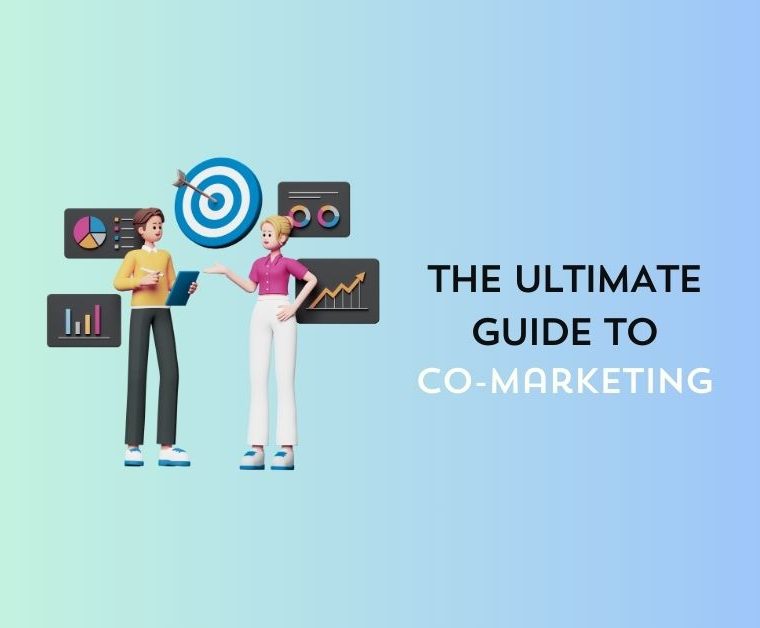Contents
What is Co-Marketing?
Co-marketing, also known as collaborative marketing or partnership marketing, is a strategic alliance between two or more organizations. These organisations will likely share similar niche, reach and brand reputation, with the goal of jointly promoting products or services to a common target audience. Co-marketing involves sharing of goals, resources and marketing efforts to achieve common objectives.
Types of Co-Marketing Campaigns
Co-marketing campaigns can take various forms, each with its unique advantages and use cases:
Co-Marketing Campaign (Integrated)
An integrated co-marketing campaign is a high commitment campaign between both partners. It involves both partners coming up with a creative campaign, with shared messaging, leveraging all their shared and owned channels, such as email, in-app messaging, emails, social media with the addition of PR. This type of co-marketing campaign results in high visibility with broader market reach, as well as reaching existing partner audiences.
Co-Promotion
Co-Promotions focus on a short-term offer to each others audiences, or developing a joint promotional message to send to their combined audience. This could entail discounts, giveaways, or limited-time offers, aimed at attracting new customers, trials or leads for both collaborating brands. According to a survey by MarketingProfs, 67% of marketers consider co-promotions highly effective.
Co-Branding
Co-branding initiatives result in the creation of a unique product or service that combines the strengths of two brands. This approach helps organizations expand their product portfolios and increase market share. Co-branded products typically experience a 21% increase in sales.
Content Collaboration
Content collaboration involves sharing valuable content, such as blog posts, webinars, or podcasts, to engage audiences and establish authority in a niche or industry. Content co-marketing efforts often lead to a 72% increase in website traffic. (Source: Content Marketing Institute)
Co-Hosting
Co-hosting events, webinars, or conferences with a partner brand can boost attendance, provide added value to participants, and foster networking opportunities. Eventbrite reports that co-hosted events have a 25% higher attendance rate.
Who is Co-Marketing Suitable For?
Co-marketing is a versatile strategy suitable for various industries and sectors, but often with slightly different marketing goals. Co-marketing is popular with :
Software & Techology
Software companies can leverage co-marketing to expand their reach and tap into new markets by partnering with complementary partners, often also in SaaS. Being performance marketing orientated, software companies (as opposed to Professional Services for instance) have a rigorous understanding of campaign attribution, eg conversion rates and value. This leads them to experiment with a broad range of co-marketing tactics including cross-promotions, co-promotions, guest posts (eg SEO backlinks), webinars, podcasts and more to see which triggers the best results. In fact, 75% of SaaS companies believe that partnerships are essential for growth. (Source: TechCrunch)
Retail & Ecommerce
Retailers and ecommerce businesses can use co-marketing to boost sales and increase brand visibility by collaborating with other brands having a similar target audience. As opposed to software which is often subscription based, retail and ecommerce need to keep aspirational to their audience, to get return customers. For that reason brand collaborations (or co-branding) products - such as Adidas & Yeezy or Redbull & Go-Pro, are very popular options. Research shows that 87% of consumers purchase from brands that have co-branded with another company. (Source: eMarketer). However, smaller ecommerce also leverage cross-promotions and co-promotions for simpler marketing collaborations.
Professional Services
Professional services providers can increase credibility and access a larger client base by collaborating with other experts or organizations in their clients' niche. Professional Services often focus on increasing brand awareness, introductions and building reputation. As such collaborating on thought leadership pieces or co-hosting events and webinars are top of their activities list. According to Deloitte, 88% of professional services firms believe that co-marketing increases brand visibility.
Entertainment
In the entertainment industry, co-marketing partnerships can generate excitement and buzz. For instance movies, will often collaborate releases with retail brands for a co-branded product line eg Monsters Inc and kids school supplies. Video games might also do a similar line for an older audience eg Balenciaga and Fortnite. In this case, creating an unusual pairing created a lot of press and interest for both brands.
Membership Organizations
Membership organizations can increase membership, while also strengthening member engagement by teaming up with businesses that target crossover audiences. For example, an accounting body could team up with an accounting software company. With co-promotions and cross-promotions, they can target new members. With content collaboration and co-hosting, they strengthen brand and engagement. A survey by Harvard Business Review found that 89% of associations believe co-marketing enhances member satisfaction.
Non-Profit
Non-profit organizations can raise awareness and support for their causes by partnering with corporate entities, sharing resources, and reaching a broader audience to drive social impact. Partners often enjoy collaborating with non-profits on events and fundraising, as it supports their corporate social responsibility (CSR) goals, while also building brand awareness and legitimacy in an industry.
Pros and Cons of Co-Marketing Campaigns
Before embarking on a co-marketing journey, it's crucial to weigh the pros and cons:
Pros of Co-Marketing
Cons of Co-Marketing
How to Do a Co-Marketing Campaign
Successfully executing a co-marketing campaign involves several key steps:
1. Audit Your Brand, Reputation, and Reach
Evaluate your brand's strengths and weaknesses and assess your reputation in the market. Equally essential, you'll need to understand your brand's reach, from shared and owned media, reviewing how you'll distribute your partner's campaign. Utimately, think about what you have to offer a partner, like on a dating site. The stronger your brand, reach, reputation and relevancy, the more attractive you are to similar partners.
2. Define Your Marketing Goals
Set clear, measurable objectives for your co-marketing campaign to ensure alignment with your partner and a focused approach. For example, do you want to raise brand awareness, drive more traffic to your website, strengthen your reputation in a particular industry or generate more relevant leads.
3. Find Co-Marketing Partners
Identify brands or businesses that align with your goals, industry, target audience and values. You’ll need to do some due diligence on their reputation, if they're not known to you already. Methods of finding partners include
4. Plan Co-Marketing Campaigns
Collaborate with your co-marketing partner to plan and strategize the campaign. It’s very important to define roles, budget, timeline, resources, design/ assets and expectations in advance, to ensure a smooth execution and positive partnership outcome.
5. Create a Co-Marketing Agreement
To ensure that both parties adhere to their commitments in the co-marketing campaign, document all terms, conditions, and responsibilities in a formal agreement to protect both parties and maintain transparency.
6. Implement the Co-Marketing Campaign
Communication in a partnership is essential. The great way to ensure the campaign is executed effectively, is to share a project management board with tasks and deadlines, such as Trello or Asana. This will help keep both organisations aligned to the agreed-upon strategy and timeline.
7. Share Co-Marketing Campaign Results
Previous agreements should outline what data will be shared between both organisations to report on campaign results. Large and enterprise organisations tend to be more protective over internal data including campaign results. By having set outcomes for your campaign, you can effectively judge whether it met your expectations. Then discuss what worked, what didn't, and areas for improvement.
8. Repeat the Co-Marketing Process with Learnings
Your first co-marketing campaign is often a learning experience. Apply the insights gained from previous campaigns to refine your co-marketing strategy to continue building successful partnerships.
Co-Marketing Campaign Example
Duolingo and Headspace
Duolingo, a language learning app, and Headspace, a mindfulness and meditation app, teamed up for a creative integrated co-marketing campaign aimed at promoting mental wellness and personal growth.
Execution
Results
Cco-marketing is a powerful marketing strategy that can unlock tremendous growth potential for your business. Most organisations can benefit from adding co-marketing to their marketing strategy, though it is not as leveraged as often as other tactics. However, by collaborating with like-minded brands, you can amplify your marketing efforts, reach new target audiences and achieve great results cost effectively.




